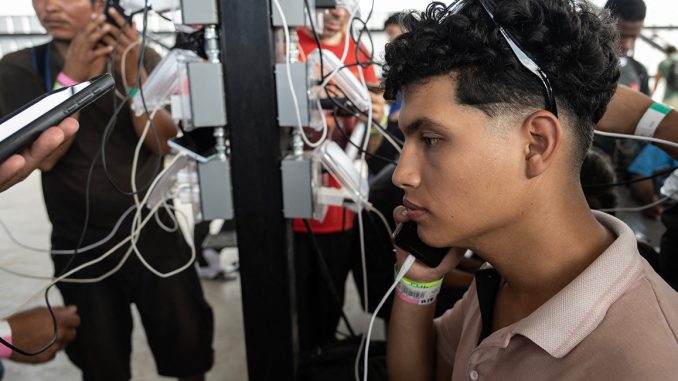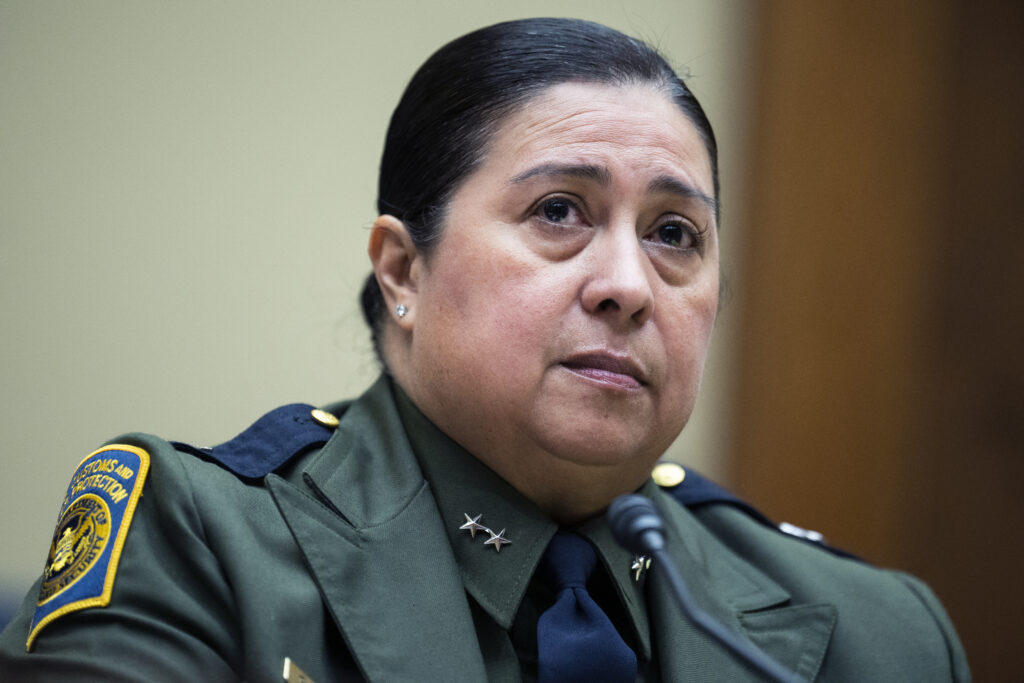
The modern flow of information is driving illegal immigration, according to multiple Border Patrol sector chiefs. If released into the interior of the U.S., some illegal aliens allegedly share their success on social media, or call home and encourage family or friends to cross the border and join them in America, furthering a cycle of illegal border crossings.
Illegal aliens cross into the “Del Rio Sector in large part because of the message that is transmitted among the migrant population,” Jason Owens told staff members of the House Homeland Security Committee during an interview in May and shared with The Daily Signal Thursday. Owens, who has since been promoted to Border Patrol chief, was serving as chief patrol agent of the Del Rio Sector at the time of the interview with House Homeland Security staff.

“When you have folks that make the trip and they come across, they’re in communication with the folks that are back in their home country or their families who may also be thinking about making that journey,” Owens said. “And if they perceive it to be safer or more expedient, they give recommendations, and they do that by phone, they do that on social media outlets.”
The Del Rio Sector in Texas is one of nine border sectors along America’s border with Mexico, and tends to be one of the higher trafficked areas of the border. In fiscal year 2023, which ended Sept. 30, Customs and Border Protection encountered 393,226 illegal aliens in the Del Rio Sector.
“I believe that the migrants communicate the entirety of their experience to their friends and family back home, and that would include what their experience was with whatever processing pathway they were put into,” Owens said.
The “processing pathways” Owens references include the Biden administration’s “lawful pathways,” which have allowed for the release of illegal aliens into the interior of the U.S.
In October, the House Judiciary Committee released findings that at least 3.8 million illegal aliens either have been released into the nation’s interior or successfully evaded the Border Patrol to enter the country since President Joe Biden took office Jan. 20, 2021.
Owens’ observations regarding the communication flow between migrants is not unique to the Del Rio Sector, according to comments made by other sector chiefs during a series of interviews with House Homeland Security staffers conducted between the beginning of May and end of September.
When asked what factors draw migrants to cross the border into the U.S., Rio Grande Valley Sector Chief Patrol Agent Gloria Chavez said, “It would be families that are already in the United States pulling their relatives, you know, encouraging their relatives to come out.”

Other pull factors include “companies or organizations that are hiring these individuals in the United States that others have told them, ‘Hey, you can get a job here,’ type thing. I think it’s the feedback that people that are here already provide them to encourage them to come,” Chavez said.
During an interview with Laredo Sector Chief Patrol Agent Joel Martinez, a Homeland Security staffer asked whether illegal aliens would still come to the U.S. even after being informed that the journey was hard and long if they knew they would be released into the U.S.
“Yes,” Martinez answered.
“How else do they find out about information?” the staffer pressed. “It’s not just the cartel, right? Family that’s already come, do they call back?”
“Yes,” the agent said.
“And some people … wait in Mexico to see if the people they were with are successful before they cross?”
“Yes,” he said.
“Do you think that that has a large influence on whether a person decides to cross into the United States?” the Homeland Security staff member asked.
“Yes,” Martinez responded.
The widespread use of social media has also made it easy for migrants and “smuggling outfits” to use platforms like TikTok to share how and where to cross the border illegally, Yuma Sector Deputy Chief Patrol Agent Dustin Caudle said during his interview with representatives from the House Homeland Security Committee.
TikTok videos show migrant’s “firsthand accounts of which trails to take, where the border wall ended, which gap to exploit, you know, where to stay, all of those things,” Caudle said.
The information dissemination has changed the patterns of illegal immigration, according to El Paso Sector Chief Patrol Agent Anthony Good and Tucson Sector Chief Patrol Agent John Modlin.
If an illegal alien is released from Customs and Border Protection, Good says, “then that person that was released will get on social media and say, ‘Hey, look at me, I’ve been released.’ And then that creates a draw specifically to that area,” he said. “So, if it happens in El Paso and they post that on social media, that will create a draw to El Paso, same for any other sector.”
Modlin told Homeland Security Committee staff members that when he started his career, “immigration flows took months to change, and now it seemingly can change overnight because people are livestreaming themselves crossing the border. They’re sending it back to—their families are seeing it. People in the area they come from see it.”

The Tucson Sector chief added that “there’s not the air of mystery to the border that there used to be, because people can leave their country and then, however long it takes them, a couple weeks to get here, and then they’re inside the United States, and then they’re in Kansas City, or they’re wherever their destination is, they’re there and they’re in communication with their families.”
CBP encountered a record 2.4 million illegal aliens at the southern border in fiscal year 2023, and over 6.6 million illegal aliens have been encountered at the U.S. border with Mexico since the start of the Biden administration.
Have an opinion about this article? To sound off, please email letters@DailySignal.com, and we’ll consider publishing your edited remarks in our regular “We Hear You” feature. Remember to include the URL or headline of the article plus your name and town and/or state.

